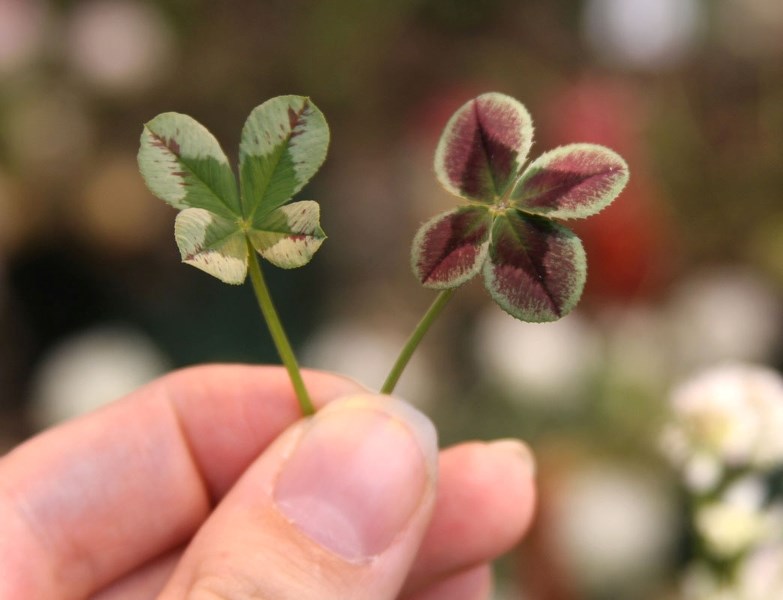The odds of finding a four-leaf clover are supposedly one in 10,000.
This suggests that Georgia's Wayne Parrott is the luckiest man alive, as he has a whole collection of them growing in his lab.
A professor of plant breeding and genomics, Parrott has spent decades developing scores of new clover varieties at the Parrott Lab at America's University of Georgia. He's got red ones, white ones, striped ones, flecked ones, and probably 50-some four-leaf producing clover plants in his greenhouse.
"You know, I don't play the lottery," he says, when asked about this.
"Maybe I should?"
The myth of the lucky four-leaf clover is thought to date back to biblical times, with Eve carrying one from the Garden of Eden. Ireland's St. Patrick reputedly used the three leaves of the shamrock (clover) to discuss the Holy Trinity, with the fourth leaf representing God's grace.
You generally find four species of clover in Alberta, says Calvin Yoder, forage seed specialist with Alberta Agriculture: red, alsike, sweet and white Dutch.
Red and alsike clover are typically used in hay or pasture as they have more protein in them than grass, Yoder says. Sweet clover is typically used for reclamation purposes. Dutch is what's found on most lawns.
Clover is often used to fertilize fields since it has nitrogen-fixing properties, notes Jim Hole, co-owner of the Enjoy Centre. Like most legumes, its roots host bacteria that convert gaseous nitrogen into useable ammonium and other compounds, enriching the soil.
A clover plant is much bigger than the tiny thing we pluck for luck, Parrott notes. That's just the leaf of the plant, which is composed of many smaller leaflets – three per leaf, in most cases. Each clover patch is usually one plant, with some older ones growing to a few feet in diameter.
A matter of genes
Evolution seems to have favoured three-leaf clovers over four in part because the leaflets start shading each other out once you get more than three per stalk, Parrott says – alfalfa and soybeans also stick with three.
"No one makes a big deal about a four-leaf soybean, but it happens just as much."
Clovers occasionally have four-leaflet leaves for the same reason we get cats with extra toes, Parrott says – mutation.
In 2010, Parrott and his team isolated a gene in the Dutch white clover that, when expressed, causes it to have four leaves instead of three. (The three-leaf gene usually suppresses it.)
But science is still a long way from producing four-leaf clovers on demand – all the ones in Parrott's collections are from careful crossbreeding, as are the ornamental four-leaf clovers in some stores.
"We know there's a location on the chromosome that, if you have a change there, you start to get four-leafs," Parrott says.
"But what we don't know is why one plant might have 10 per cent four-leafs and another might have 90 per cent."
His team's research and his personal observations suggest that light, temperature and other environmental factors all play a role – he can find one four-leaf clover a day in the spring and early summer, yet virtually none the rest of the year.
Figuring out how to control leaflet production in clover could help farmers produce higher yield crops, Parrott notes.
What are the odds?
Although many sources peg the odds of spotting a four-leafed clover on your first try as one in 10,000, the Gazette could find no source for this statistic.
Parrott says he's never seen this figure in scientific literature and suspects it's an educated guess.
"You have to love the Internet for its ability to propagate 'facts'!"
If you want a really rare item, go for a six-leaf clover, Parrott says – he's never found one in the wild, and has only ever acquired them through selective breeding.
One in 10,000 sounds bad, but you can actually find that many leaves in just a couple of square metres of clover, notes Hole.
"If you have a great big field of clover and patience, you can likely come up with one."
The best way to find four-leaf clovers is to use your subconscious, Parrott says. Look for breaks in the patterns in a field, then search closer when you spot something out of place.
"Every now and then, you'll find a whole patch of them."



